
The Defence Forces of Georgia, or Georgian Defence Forces (GDF), are the combined military forces of Georgia, tasked with the defence of the nation's independence, sovereignty, and territorial integrity. They consist of the Land Force, Air Force, National Guard, and Special Operations Forces. The Defence Forces are under overall leadership of the Minister of Defence of Georgia and directly headed by the Chief of Defence Forces.
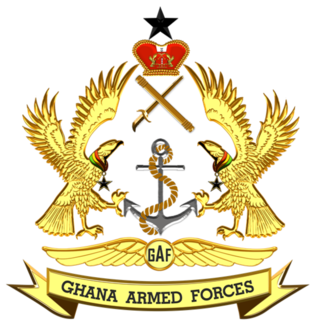
The Ghana Armed Forces (GAF) is the unified armed force of Ghana, consisting of the Army (GA), Navy (GN), and Ghana Air Force.

The Armed Forces of Liberia (AFL) are the armed forces of the Republic of Liberia. Tracing its origins to a militia that was formed by the first black colonists in what is now Liberia, it was founded as the Liberian Frontier Force in 1908, and retitled in 1956. For almost all of its history, the AFL has received considerable materiel and training assistance from the United States. For most of the 1941–89 period, training was largely provided by U.S. advisers, though this assistance has not prevented the same generally low levels of effectiveness common to most of the armed forces in the developing world.
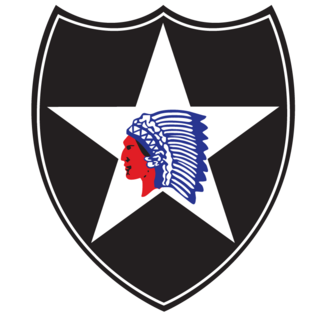
The 2nd Infantry Division ("Indianhead") is a formation of the United States Army. Since the 1960s, its current primary mission is the pre-emptive defense of South Korea in the event of an invasion from North Korea. There are approximately 17,000 soldiers in the 2nd Infantry Division, with 10,000 of them stationed in South Korea, accounting for about 35% of the United States Forces Korea personnel. Denoted the 2nd Infantry Division-ROK/U.S. Combined Division (2ID/RUCD), the division is augmented by rotational Brigade Combat Teams (BCTs) from other U.S. Army divisions.

The Irish Army is the land component of the Defence Forces of Ireland. The Irish Army has an active establishment of 7,520, and a reserve establishment of 3,869. Like other components of the Defence Forces, the Irish Army has struggled to maintain strength and as of April 2023 has only 6,322 active personnel, and 1,382 reserve personnel. The Irish Army is organised into two brigades.

The Eighth Army is a U.S. field army which commands all United States Army forces in South Korea. It is headquartered at the Camp Humphreys in the Anjeong-ri of Pyeongtaek, South Korea. Eighth Army relocated its headquarters from Yongsan to Camp Humphreys in the summer of 2017. It is the only field army in the U.S. Army. It is responsible to United States Forces Korea and United States Army, Pacific.

The 98th Infantry Division ("Iroquois") was a unit of the United States Army in the closing months of World War I and during World War II. The unit is now one of the U.S. Army Reserve's training divisions, officially known as the 98th Training Division. Its primary mission is to conduct Initial Entry Training (IET) for new soldiers. It is one of three training divisions subordinate to the 108th Training Command (IET) and handles command and control of units throughout the eastern United States and in Puerto Rico.

The 6th Infantry Division was an infantry division of the United States Army active in World War I, World War II, and the last years of the Cold War. Known as "Red Star", it was previously called the "Sight Seein' Sixth".

The United Nations Mission in Liberia (UNMIL) was a United Nations peacekeeping operation established in September 2003 to monitor a ceasefire agreement in Liberia following the resignation of President Charles Taylor and the conclusion of the Second Liberian Civil War (1999–2003). At its peak it consisted of up to 15,000 UN military personnel and 1,115 police officers, along with civilian political advisors and aid workers.
The 9th Engineer Battalion is a unit of the United States Army that deploys to designated contingency areas and conducts combat and/or stability operations in support of a brigade combat team. It is a divisional mechanized combat engineer unit, composed of three line companies and a headquarters company. Its mission is to provide assured mobility, counter-mobility, general engineering, and survivability support, with well trained sappers ready to deploy anywhere at any time. The unit's history spans service in 1917 in the US southwest, World War II in France and Germany, multiple deployments to the Balkans, and multiple deployments in support of the global war on terrorism in Iraq and Afghanistan. It is most famous for the capture of the Ludendorff Bridge across the Rhine River. As of 18 May 2015, the battalion exists as the 9th Brigade Engineer Battalion in Fort Stewart, GA under 2nd Armored Brigade Combat Team, 3rd Infantry Division.

The Georgia Sustainment and Stability Operations Program (GSSOP) was a security assistance program designed to create an increased capability in the Georgian military to support Operation Iraqi Freedom stability missions. Launched in January 2005, GSSOP was also designed to help solidify the progress made during the Georgia Train and Equip Program (GTEP) of 2002–2004 and continue to assist in the implementation of western standards in the Georgian armed forces.

The Florida National Guard is the National Guard force of the state of Florida. It comprises the Florida Army National Guard and the Florida Air National Guard.

Below is an estimated list of the major units deployed within the Multi-National Force – Iraq and other United States military units that were operating in Iraq under the U.S. Central Command (USCENTCOM) in 2009, during the Iraq War.

The reorganization plan of the United States Army was implemented from 2006 to 2016 under the direction of the Brigade Modernization Command. This effort formally began in 2006 when General Peter Schoomaker was given the support to move the Army from its Cold War divisional orientation to a full-spectrum capability with fully manned, equipped and trained brigades; this effort was completed by the end of 2016. It has been the most comprehensive reorganization since World War II and included modular combat brigades, support brigades, and command headquarters, as well as rebalancing the active and reserve components.
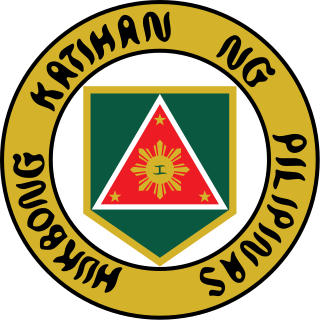
The Philippine Army (PA) is the main, oldest and largest branch of the Armed Forces of the Philippines (AFP), responsible for ground warfare and as of 2021 had an estimated strength of 143,100 soldiers backed by 131,000 ready reserves. The service branch was established on December 21, 1935, as the Philippine Commonwealth Army. The Philippine Army has engaged in many conflicts including the ongoing Communist rebellion in the Philippines, the Moro conflict and, alongside other national military forces, in conflicts of international scope.
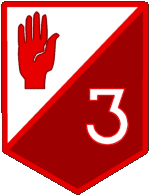
The 3rd Infantry Battalion is one of the seven current infantry battalions of the Irish Army. It is the oldest still established unit of the Army, and is headquartered in Stephens Barracks, Kilkenny as part of 1st Brigade.

The Ghana Army is the principal land warfare force of Ghana. In 1959, two years after the Gold Coast became independent from the British Empire, the Gold Coast Regiment was withdrawn from the Royal West African Frontier Force and formed the basis for the new Ghanaian army. Together with the Ghana Air Force and Ghana Navy, the Ghana Army makes up the Ghana Armed Forces, which is controlled by the Ghanaian Ministry of Defence and Central Defence Headquarters, both of which are located in the Greater Accra Region.

The Nigerian Army (NA) is the land force of the Nigerian Armed Forces. Tracing its history to British colonial forces in West Africa, it is the largest component of the armed forces. The President of Nigeria is the Commander-in-Chief of the Nigerian Army, and its professional head is the Chief of Army Staff, who is the highest ranking military officer of the Nigerian Army. It is governed by the Nigerian Army Council (NAC). The Nigerian Army is operationally and geographically divided into ten divisions, the basic field formation. The army has been involved in operations throughout the country, most especially during the Nigerian Civil War, and has undertaken major operations abroad. Nigerian Army officers have served as chiefs of defence in other countries, with Brigadier General Maxwell Khobe serving as Sierra Leone chief of staff in 1998–1999, and Nigerian officers acting as Command Officer-in-Charge of the Armed Forces of Liberia from at least 2007.
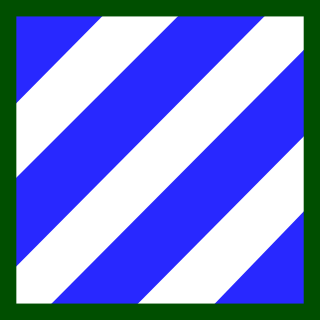
The 48th Infantry Brigade Combat Team is a modular infantry brigade of the Georgia Army National Guard. One of the oldest units in U.S. Army history, the lineage of the 48th Infantry Brigade can be traced back to 1825. It is one of few units in the US military that also saw service as a unit of the Confederate States of America during the American Civil War. Today, the 48th IBCT is part of the U.S. Army's "Associated Units" program where it is aligned under the 3rd Infantry Division, a combined arms combat maneuver unit of the Regular Army.

The page contains the current structure of the British Army. The British Army is currently being reorganised to the Future Soldier structure.



















